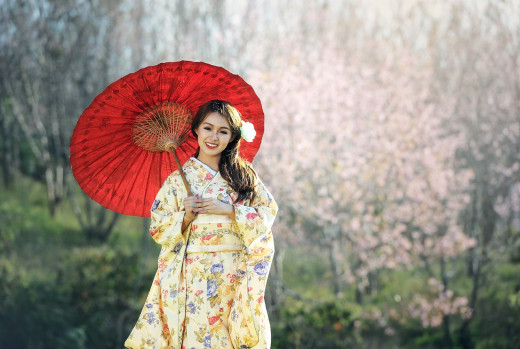why-people-love-japanese-women
Japan's global profile, a fascinating tapestry woven from ancient custom and avant-garde technology, draws consistent international curiosity. Central to this cultural phenomenon, the figure of the Japanese woman holds a uniquely captivating position. Highly regarded for her distinct aesthetic, professional resilience, and nuanced cultural practice, she has evolved into a global symbol of refined elegance.
To move beyond superficial generalizations, this article conducts an analytical deep dive, exploring the complex social, artistic, and philosophical factors—the true cultural mechanisms—that contribute to the positive and enduring worldwide fascination with Japanese women.

The Philosophical Depth of Japanese Aesthetics
The global admiration for the appearance and style of Japanese women is less about mere physical features and more about adherence to deep-seated artistic and philosophical principles, making their beautiful aesthetic both timeless and influential.
Iki and Shibui in Style: Japanese women often embody Iki (a chic, spontaneous, and understated elegance) and Shibui (a subtle, quiet, and unobtrusive beauty). Their fashion and personal grooming reflect a high standard of mise en place—everything in its rightful, deliberate place. This intentionality, rather than overt display, is the source of their sophisticated style, distinguishing them globally.
A Commitment to Preventive Care: The frequently observed youthful appearance is not accidental but a result of a cultural philosophy that prizes longevity and preventative care, particularly through Bihaku (the pursuit of beautiful, clear skin) and meticulous dietary habits. This active maintenance is viewed as a form of self-respect, influencing global wellness trends.
The Power of Proportionality: Traditional Japanese design principles emphasize harmony and balance. This translates to an innate understanding of how clothing, makeup, and posture work together, creating a unified and proportional whole that is universally considered visually appealing.
Navigating the Social Landscape: Honne, Tatemae, and Grace
The social conduct of Japanese women is perhaps the most compelling source of their global mystique. Their interactions are governed by a refined understanding of social roles, often adding layers of intrigue and perceived grace.
Kikubari (Attentiveness): Beyond simple politeness, Kikubari signifies an acute, proactive sensitivity to the needs and feelings of others. Japanese women are frequently lauded for this skill—anticipating requirements, ensuring comfort, and navigating social space with a light, non-intrusive touch. This deep sense of social responsibility is a key component of their perceived poise.
The Balance of Honne and Tatemae: The mastery of the distinction between Honne (true feelings and desires) and Tatemae (public veneer or behavior) requires significant emotional intelligence. The capacity of Japanese women to maintain a composed, harmonious Tatemae in public, while managing complex internal Honne, is often interpreted as admirable emotional strength and self-control.
The Eloquence of Silence: Unlike cultures that prize constant verbal expression, Japanese communication often values what is not said. This quiet contemplation and measured response lend an air of intelligence and thoughtfulness, contributing to their captivating demeanor.

The Duality: Traditional Roles and Progressive Careers
A critical reason for the ongoing fascination is the modern Japanese woman's ability to embody a striking duality: respect for traditional frameworks alongside ambitious professional pursuit.
Mothers as Cultural Custodians: Traditionally, Japanese women serve as primary custodians of cultural values, passing on customs like etiquette, language nuance, and traditional arts (ikebana, tea ceremony). This deep connection to heritage keeps them rooted while they embrace modernity.
Breaking the Glass Ceiling: While Japan’s corporate culture has been historically male-dominated, a significant and rapidly growing number of Japanese girls and young women are excelling in cutting-edge industries, including technology, finance, and entrepreneurship. Their resilience and dedication demonstrate a powerful commitment to professional success and autonomy.
The Global Fashion & Media Export: From the influential maximalism of Harajuku street style to the calculated professionalism of J-Drama actresses, Japanese women serve as dynamic, constantly evolving trendsetters. Their cultural output in media continues to globalize their image as stylish, multifaceted, and dedicated individuals.
Establishing Global Benchmarks in Media and Art
The portrayal of Japanese women in global media extends beyond simple entertainment, frequently establishing benchmarks for character depth and aesthetic excellence.
Anime as Idealized Archetypes: Anime and manga often present idealized yet complex feminine archetypes—from the warrior to the intellectual—that embody dedication, courage, and complex internal lives. These representations (like the thoughtful leadership of the beautiful Rei Ayanami) offer a deeper, richer image than static stereotypes.
The Influence of Artistry: The historical reverence for female artistry—from the writers of the Heian period to modern-day filmmakers and artists—underscores a cultural appreciation for their intellectual and creative contributions, reinforcing an image of depth and intelligence.
Conclusion: A Synthesis of Refined Intention
The global and enduring admiration for Japanese women is fundamentally a response to the powerful synthesis of their cultural philosophy and refined conduct. This appeal is not accidental, but the result of intentional, deeply ingrained practices: a commitment to aesthetic harmony (Iki), proactive social consideration (Kikubari), and the quiet strength required to balance tradition with professional ambition. These qualities—poise, intelligence, and elegance—ensure the Japanese woman remains one of the world's most captivating and influential cultural figures.